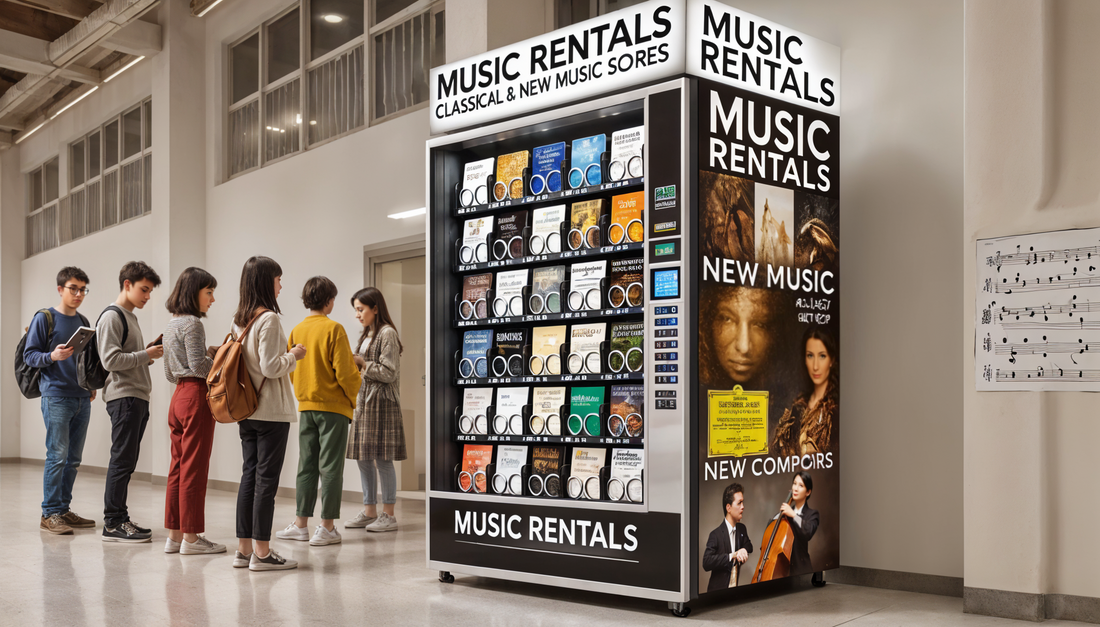Rent Control

There has been a lot of discussion surrounding the relationships that the music publishing industry has with composers and consumers. One issue in particular has been the sale and rental of scores and parts. While there is a huge variance on how much one charges for such materials, in the world of pre-college music education there is a lot of frustration among players and teachers regarding the affordability of buying or renting new music.
Not long ago I was faced with a dilemma when dealing with an ensemble of high school students that wanted to produce a concert of new music. When they approached the various publishers to procure the scores and parts of the pieces they wanted to perform, they were hit with incredibly high fees, sometimes over $800 simply to rent one piece. When the music teachers at the school approached the companies to request a discount, very little change was made in the prices even though it was clear that there was no way the kids could pay. The result was that some very wonderful works by living composers were dropped from the program in favor of works by dead ones, whose music the student ensemble could afford.
This is not an isolated case. When I was 15 years old, I won a concerto competition in orchestra camp, and I chose to play a contemporary work. When the director went to order the music, the costs were so high that he could not rent the parts for the orchestra so they reduced my public performance to a two piano rendition of the work. It was a real bummer for a teenager. Even professional groups struggle as there are stories about players being faced with the choice of either dropping a piece from their program or going about less-than-honest ways to procure the music, all because they cannot afford to pay.
How do we change the culture surrounding the sale and distribution of our music so that it is available and accessible to those beyond the insular world of professional ensembles? Even though the majority of composers are not signed with one of the major publishing companies, this issues affects us all. Most teachers of young or amateur players do not know about the options out there for finding new music, so they usually make their first foray into contemporary music by approaching an established publisher’s catalog, of which they already have a familiarity. If they experience problems when going to a resource they know, why would they ever want to make the extra effort to find out about music that is not published by the big guys?
This may sound like a David vs. Goliath story, but there is more to it than that. Publishers argue—rightly so—that they are not dictating draconian prices. Rather, the fees represent the real costs in terms of the manpower and materials needed to keep a presentable collection of scores and parts available for rental. Time and time again, they lament, rented-out parts are returned unusable, with pen scrawls and tattered edges. And if the music is actually sold, the company often loses money as it can take years to recoup the costs inherent even in printing a run of 200 copies of a score.
So if we can’t blame all the ills on the publishers, how can we make it viable for them to encourage non-professionals to try the music of living composers? Jennifer Bilfield, past president of Boosey and Hawkes, has come up with some ingenious ideas. She suggested that perhaps all the publishers could work together and create a foundation which would give out vouchers to teachers and students to make using a piece of published music for performance affordable. The publishers could design a simple, one-page application process. When an application is submitted, the applicant is awarded a certificate which can be redeemed for part rentals. That way the publishers know how their music will be handled and teachers/students have a simple portal into the world of working with music by living artists. Jennifer also suggested a more local approach in which performing organizations that already have a relationship with a publisher, such as the local orchestra, adopt a school and its music program. They then act as intermediaries from which schools can request music. The costs for the music could be underwritten by the performing organization or the publisher could allow 2-3 rentals at reduced prices to the student ensembles in exchange for a guarantee of the sponsoring professional music ensemble renting a certain amount of music for their respective players.
So there are ways to try to change this situation and I am sure some of you have great ideas of your own. However, it takes movement and initiative by those in the publishing world, an arena that is hard-pressed now to remake itself in light of the digital age. Any interested individuals inside that industry cannot go out on a limb without some support from us. They are working for businesses, and businesses have to make a profit. We need to show them how fostering programs for the performance of new music by young players is actually a smart investment decision. We can talk and write all we want, but if we can’t get the ears and the trust of the publishers, how can we get them to be part of the solution?
